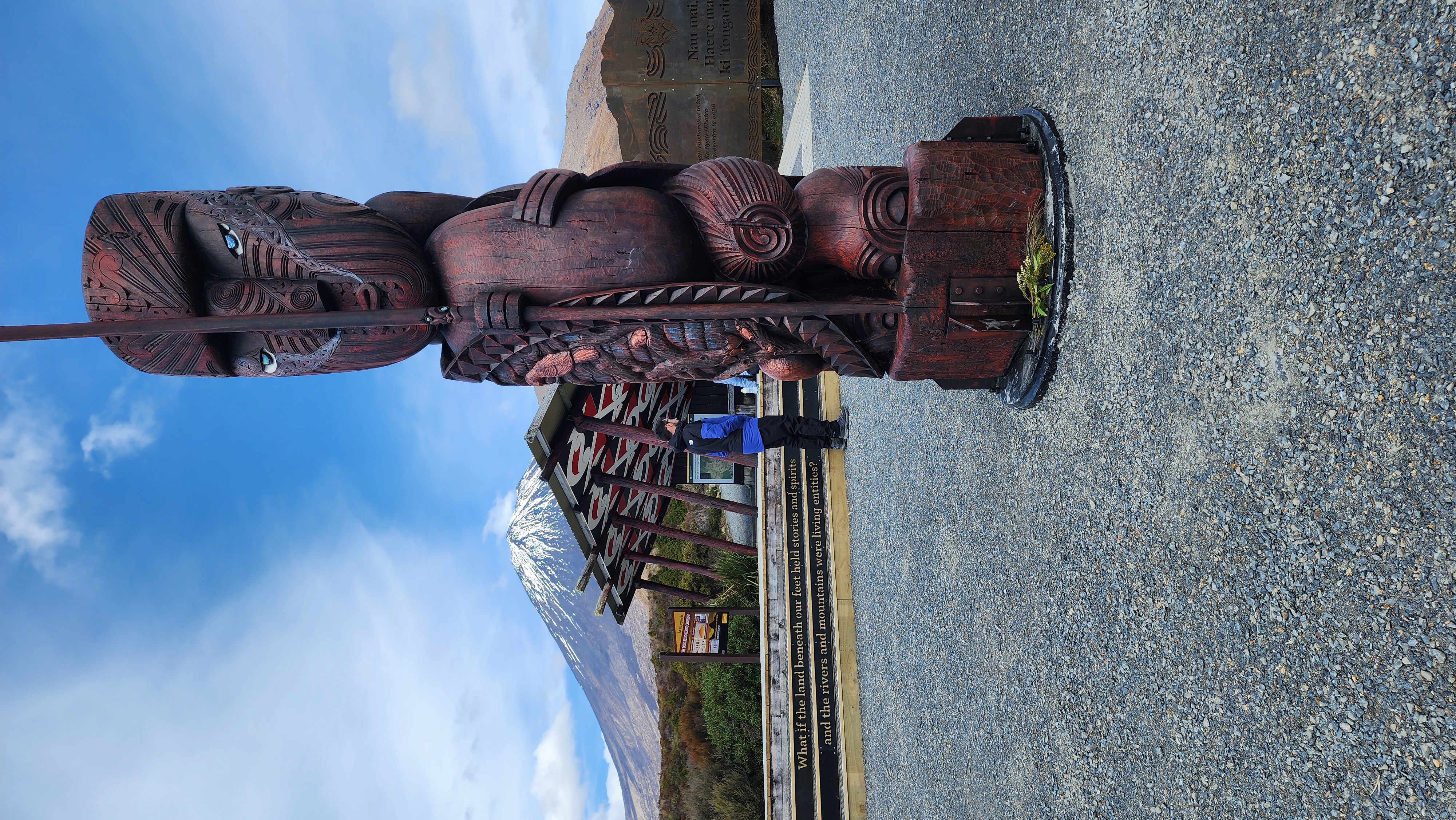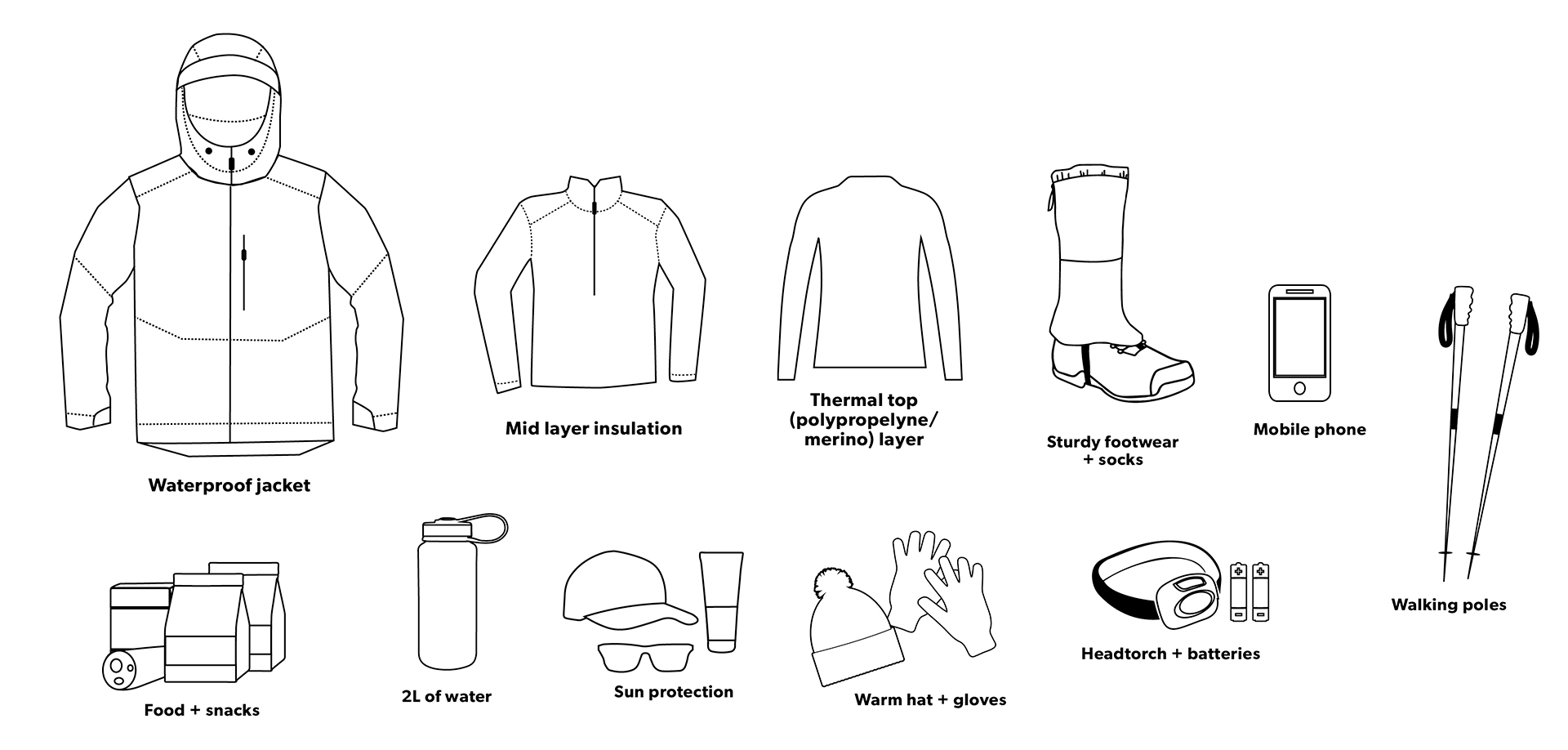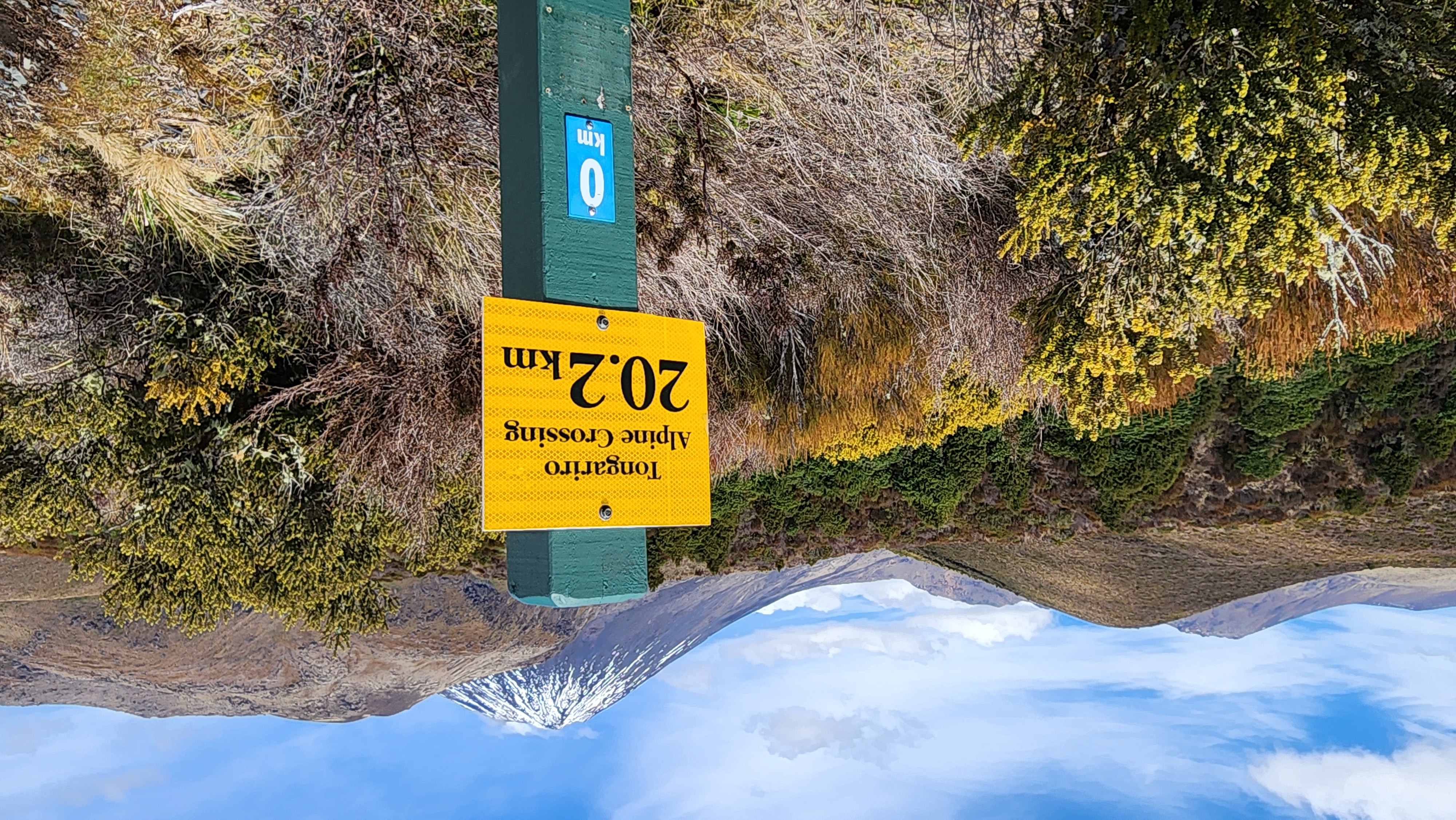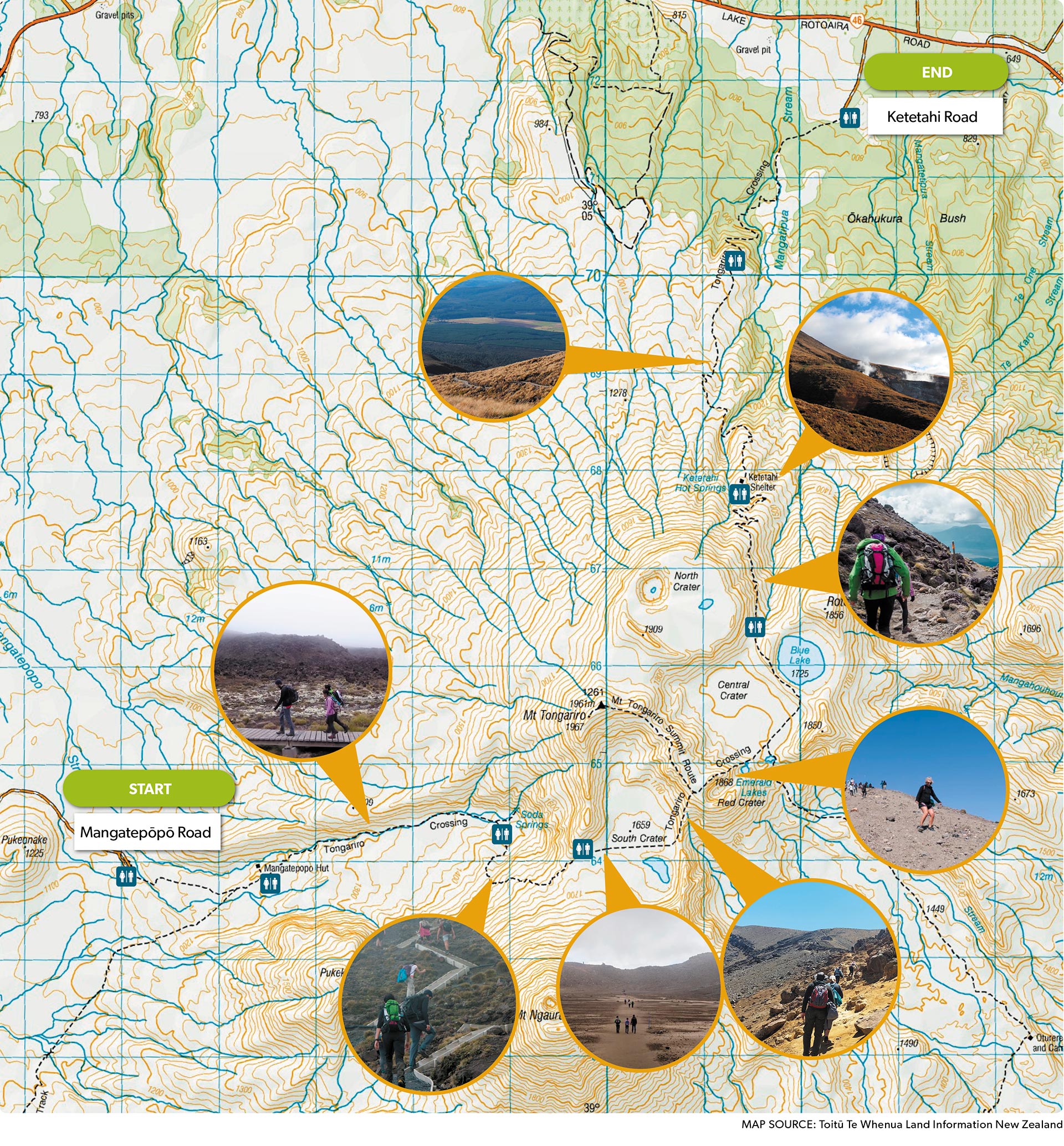The Tongariro Alpine Crossing is a challenging, yet rewarding, 20.2 km (12 mile) hike across an active volcanic landscape. Here's how to make sure you are prepared to complete the walk safely.
Tongariro Alpine Crossing Must Haves
The must-haves for your trek
 Tongariro National Park can be subject to unpredictable weather, and conditions can change quickly. It is important that all walkers carry the essentials for their journey across.
Tongariro National Park can be subject to unpredictable weather, and conditions can change quickly. It is important that all walkers carry the essentials for their journey across.
Booking
Visitors to the Tongariro Alpine Crossing are expected to book in advance for their visits through a booking system managed by the Department of Conservation (DOC). There is no cost for the bookings or a limit of the number of bookings for the seasons, but they are needed for those using shuttles and going on guided walks, and for anyone using any part of the Tongariro Alpine Crossing track including:
Department of Conservation we will provide an updates on the trail.
- Tongariro Alpine Crossing full and part track users
- Te Araroa walkers
- Soda Springs track users
- Tongariro Northern Circuit runners
- Mangatepopo Hut day visitors
- climbers
- tramping clubs
- school groups.
Visitors who have a Tongariro Northern Circuit hut or campsite booking are exempt from booking through this system.
Tongariro Alpine Crossing bookings can be made by completing an online form on the DOC website, in person at a DOC visitor center or through a walking guide or shuttle service.
Also be sure to book a shuttle for your trip, as parking in limited at both ends of the track - with a four-hour time limit from mid-October to April.
What to take
Be sure to pack the following essential items:
- Food and plenty of fluid, especially in the summer months. If you are planning on completing any of the summit tracks, ensure you have additional water supplies.
- Waterproof and wind-proof raincoat and trousers
- Strong, sturdy boots (you will be trekking over uneven volcanic terrain)
- Warm clothing layers: woolen or polypropylene thermals and fleece
- Hat and gloves
- Sunscreen and sunglasses
- First Aid Kit
- Map
- Cellphone
Due to the rugged and alpine environment, the weather in the car park at the beginning of the track can differ greatly from conditions 1000 metres higher further up the track.
Be prepared to change your plans and turn back especially when visibility is poor or strong winds prevail.

Be prepared for changes in the weather
 The weather can change quickly and unexpectedly in any alpine environment. At times conditions can be extreme.
The weather can change quickly and unexpectedly in any alpine environment. At times conditions can be extreme.
Be prepared for every type of weather. Please take care to note the Essentials List which tells you exactly what to take and what to wear.
During the winter additional gear like crampons and ice axes are required. Please take care to read Winter Experience if you are intending a winter trip.
Check the NIWA website for the weather forecast and daily weather advisories. Tongariro National Park has a specific forecast.
What to expect from the Tongariro Alpine Crossing
Although beautiful, the Tongariro Alpine Crossing, can be dangerous if you are not fully prepared to enter an alpine environment. Extreme weather, terrain and distance have resulted in this track having the highest number of search and rescues for hikers in New Zealand. The video below, produced by the New Zealand Mountain Safety Council, takes you through the entire track and shows you how to prepare for a successful day out so that you make it home safely:
The map below shows a profile of the track with key points along the way:

Environmental Care Code
Please the respect the Dual heritage Tongariro National Park by adhering to the New Zealand Environmental Care Code:
- Protect plants & wildlife
- Remove rubbish
- Keep streams & lakes clean
- Take care with stoves & fires
- Camp carefully
- Respect our cultural heritage
- Keep to the track
- Consider other people



